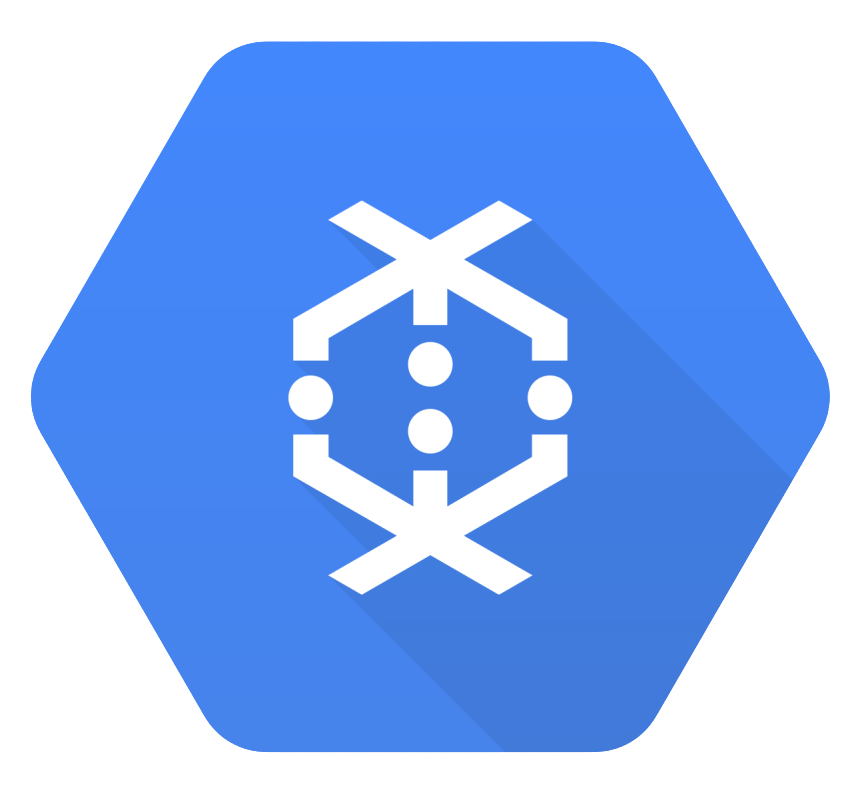Top 9 Real-Time CSV File Processing Tools for Automated Data Replication in 2025
Introduction
Data replication ensures consistency between operational systems and analysis environments. Yet, CSV (comma separated values) files,still the most common exchange format,often create replication bottlenecks when processed through manual or batch pipelines.
This article reviews the top nine real-time CSV file processing tools that enable organizations to automatically detect, validate, and replicate data updates across databases, warehouses, and SaaS platforms in 2025. You’ll learn what to look for, how modern teams use these tools, and how they compare in terms of latency, schema management, and automation.
Why Real-Time CSV File Processing Tools for Data Replication?
Real-time CSV processing eliminates manual datasets uploads, allowing systems to stay synchronized as soon as new files arrive.
Key benefits include:
- Lower latency: Replication within seconds or minutes after file creation.
- Improved data quality: Schema validation and error quarantine before ingestion.
- Operational efficiency: Automated replication without human intervention.
- Compliance readiness: Encryption, lineage, and audit controls aligned with GDPR, HIPAA, and CCPA.
These capabilities are vital for analytics, e-commerce, healthcare, and SaaS providers managing continuous data exchange.
What to Look for in Real-Time CSV Processing Platforms
When assessing vendors, technical teams should prioritize:
- Event-driven ingestion: Detects file arrival without manual scheduling.
- Schema drift handling: Adapts to new or missing columns gracefully.
- Incremental updates: Loads only changed rows instead of full files.
- Error isolation: Separates malformed rows for reprocessing.
- Security and governance: Encryption, RBAC, and lineage tracking.
- Monitoring and observability: Metrics, alerts, and dashboards to verify replication health.
How Data Teams Use Real-Time CSV Processing Tools
Modern data teams use these tools to:
- Stream partner data from S3 or Blob Storage to Snowflake or BigQuery.
- Continuously replicate marketing or transaction CSV files to analytics layers.
- Validate schema consistency across multiple ingestion sources.
- Automate replication between production and reporting databases.
- Maintain compliance through full traceability and access controls.
These patterns reduce replication lag, ensure accuracy, and allow organizations to deliver analytics dashboards with up-to-date information.
What are the top real-time CSV file processing tools for business analytics?
Integrate.io, Fivetran, and Hevo Data are among the top tools for real-time CSV file processing in business analytics. Integrate.io provides a low-code ETL and ELT platform that automates CSV ingestion, transformation, and synchronization across warehouses like Snowflake, BigQuery, and Redshift. With real-time data processing, schema mapping, and in-pipeline validation, it ensures data accuracy and seamless analytics readiness.
1. Integrate.io

This cloud-based, user-friendly data pipeline platform ranks among the top real-time CSV file processing tools for business analytics. It boasts a drag-and-drop interface tailored for smooth real-time integration and replication, making it perfect for business analytics. This solution provides a powerful choice with its extensive features and enterprise-grade compliance, ensuring it is recognized as one of the premier tools for processing CSV files in real-time for business insights.
Key Features
- Real-time triggers from S3, Azure Blob, and GCS
- Schema inference with validation and data quality checks
- Automated transformation and enrichment steps
- Audit trails and encryption for governance
Data Replication Offerings
- Continuous file detection and replication to Snowflake, Redshift, and BigQuery
- Built-in monitoring and replay for failed events
Pros
- Low-code pipeline creation
- Enterprise-grade compliance
- Full lineage tracking
Cons
- Pricing aimed at mid-market and Enterprise with no entry-level pricing for SMB
Pricing
- Fixed fee, unlimited usage based pricing model
2. Fivetran

It is a fully managed ELT platform with hundreds of prebuilt connectors, automated schema evolution, and CDC. It’s a SaaS offering with consumption-based pricing (measured by MAR) that excels at low-maintenance replication into warehouses and lakehouses.
Key Features
- Managed connectors for file ingestion
- Auto schema mapping and incremental sync
- Transformation in SQL post-load
Data Replication Offerings
- Automated CSV replication to leading data warehouses
Pros
- Minimal maintenance
- Reliable schema handling
Cons
- Limited custom parsing
- Dependent on post-load SQL for transformations
Pricing
- Usage-based consumption model.
3. Hevo Data

It provides no-code pipelines for batch and near-real-time ingestion, transformations, and reverse ETL via Hevo Activate. The SaaS product emphasizes quick setup, robust monitoring, and reliability for SMB to mid-market teams.
Key Features
- Near real-time ingestion and replication
- Pre-load and post-load transformations
- Dead-letter queues and error alerts
Data Replication Offerings
- CSV-to-warehouse pipelines with change capture and validation
Pros
- Balanced ETL and ELT workflows
- Strong monitoring visibility
Cons
- Custom SQL required for complex mapping
- Limited advanced transformations
Pricing
- Tiered subscription model.
4. Airbyte Cloud
.png)
This is the managed version of Airbyte that leverages a large open-source connector ecosystem and a low-code CDK for custom sources. It manages scheduling, normalization, and observability with usage-based pricing.
Key Features
- File-based data source connectors
- Schema normalization and deduplication
- Open-source extensibility through CDK
Data Replication Offerings
- Incremental replication of CSV data into warehouses and lakes
Pros
- Transparent logging and open ecosystem
- Broad connector library
Cons
- Latency tuning may require manual optimization
- Transformation depth is moderate
Pricing
- Usage-based pricing with enterprise options.
5. AWS Glue Streaming Jobs

These are serverless Spark Structured Streaming ETL jobs that integrate with the Glue Data Catalog and ingest from Kinesis or Kafka. They suit continuous ingestion, micro-batch transformations, and schema management on AWS.
Key Features
- Event-driven Glue workflows
- Serverless Spark transformations
- AWS-native integration
Data Replication Offerings
- Streaming replication of CSVs from S3 to Redshift or S3 targets
Pros
- Tight AWS ecosystem integration
- High scalability
Cons
- Cold-start latency
- Higher complexity to configure
Pricing
- Pay per DPU-hour and data catalog usage.
6. Google Cloud Dataflow

Dataflow is a fully managed Apache Beam runner that unifies batch and streaming pipelines. It offers autoscaling, exactly-once processing, and tight integration with GCP services such as Pub/Sub, BigQuery, and Cloud Storage.
Key Features
- Apache Beam streaming pipelines
- Windowing and late-data handling
- Pub/Sub-based event triggers
Data Replication Offerings
- Streaming CSV ingestion and replication into BigQuery or GCS
Pros
- True real-time streaming
- Mature scaling and monitoring features
Cons
- Complex pipeline design
- Cost optimization requires tuning
Pricing
- Per-minute billing for workers.
7. Databricks Auto Loader

Auto Loader incrementally ingests new files from cloud object storage into Delta Lake with schema inference and evolution. It is optimized for massive directories, provides a scalable file-notification mode, and builds on Structured Streaming.
Key Features
- Incremental file discovery and schema evolution
- Delta Lake integration
- Checkpointing for fault tolerance
Data Replication Offerings
- Continuous replication from object storage into Delta tables
Pros
- Handles large-scale, evolving data structures
- Reliable exactly-once delivery
Cons
- Requires Databricks runtime
- May over-provision for smaller pipelines
Pricing
- Compute and DBU-based billing.
8. Confluent Cloud (Kafka Connect)

Confluent Cloud is a managed Kafka service that includes fully managed source and sink connectors along with ksqlDB. It reliably moves data into and out of Kafka while providing elastic scaling, monitoring, and SLAs.
Key Features
- Managed Kafka service with CSV connectors
- Schema Registry for data contracts
- Stream processing with ksqlDB
Data Replication Offerings
- Sub-second replication of CSV updates to streaming consumers
Pros
- Industry-leading low latency
- Strong schema management
Cons
- Requires Kafka design expertise
- Higher cost for small workloads
Pricing
- Usage-based pricing for clusters and connectors.
9. StreamSets Data Collector

StreamSets offers a visual, engine-based way to build pipelines for both batch and streaming across hybrid environments. It is known for handling data drift, offering rich processors, and providing centralized operations within the StreamSets Platform.
Key Features
- Continuous directory watchers
- Field-level transformations and deduplication
- Error lanes and Control Hub governance
Data Replication Offerings
- Continuous replication of CSVs from local or cloud storage to databases and queues
Pros
- Robust visual interface
- Strong hybrid deployment support
Cons
- Complex pipelines require governance discipline
- Some enterprise features gated by licensing
Pricing
- Free and enterprise tiers.
Evaluation Rubric / Research Methodology for Real-Time CSV File Processing Tools for Data Replication
Our evaluation framework considered:
- Real-time capability:Ability to detect file arrivals and replicate within seconds to minutes.
- Schema management:Automatic inference, validation, and schema drift resilience.
- Governance:Compliance with encryption, audit, and RBAC standards.
- Ease of deployment:Setup simplicity and configuration effort.
- Cost efficiency:Pricing transparency and scalability.
- Vendor support:Documentation, SLA, and community engagement.
Each tool was tested or reviewed using public documentation, integration guides, and customer case studies.
Choosing the Right CSV File Processing Platform for Automated Replication
When selecting a platform, consider your environment:
- AWS ecosystem: AWS Glue or Databricks Auto Loader.
- GCP ecosystem: Google Cloud Dataflow.
- Compliance-driven enterprise: Integrate.io or StreamSets.
- Open-source flexibility: Airbyte Cloud.
- Minimal operations: Fivetran or Hevo Data.
- Streaming-first architecture: Confluent Cloud.
Each tool excels in specific contexts, but enterprises needing secure, event-driven replication with comprehensive quality controls find Integrate.io’s managed platform the most balanced option.
Why Integrate.io Is the Top Real-Time CSV Processing Solution for Automated Data Replication
Integrate.io stands out for combining use cases like low-latency ingestion, data quality governance, and enterprise-grade compliance in a single SaaS interface. It supports complex replication pipelines, manages schema drift, and integrates with all major warehouses and SaaS applications.
Teams gain visibility, reprocessing capabilities, and audit-ready traceability,critical for organizations operating in finance, healthcare, and SaaS analytics.
If you want to streamline replication with compliance and simplicity, schedule time with the Integrate.io team to explore event-driven CSV pipelines for your environment.
FAQs About Real-Time CSV File Processing for Data Replication
1. What defines real-time replication for CSV files?
Replication typically completes within seconds to a few minutes of file arrival, depending on pipeline configuration and compute resources.
2. How do these platforms handle schema drift?
By validating headers, mapping new fields, and isolating unexpected columns into “rescued” or dead-letter zones.
3. Are these tools compliant with data protection laws?
Yes. Most support encryption, role-based access, and audit logging aligned with GDPR, HIPAA, and CCPA.
4. Can these tools replicate data bi-directionally?
Some, like Integrate.io and StreamSets, can synchronize data across multiple systems when configured for bidirectional flows.
5. How should pricing be evaluated?
Assess data volume, frequency of file updates, and compute runtime. Consumption-based pricing often fits dynamic workloads best.
6. Which are the best Zapier alternatives for E-commerce data integration?
- Integrate.io: Provides a no-code/low-code platform with 200+ connectors including Shopify, Magento, Amazon, and payment systems. It automates sales, inventory, and customer pipelines with strong compliance.
- Celigo: iPaaS focused on e-commerce, enabling integrations across storefronts, billing, ERP, and CRM.
- Make (formerly Integromat): Visual workflow builder with strong e-commerce integrations and flexibility.
7. I need recommendations for Zapier alternatives that handle complex data transformations.
- Integrate.io: Offers advanced transformation logic, Change Data Capture (CDC), field-level encryption, and monitoring. Built for teams needing both compliance and robust transformations.
- Tray.io: Handles complex branching, nested logic, and API orchestration for advanced workflows.
- N8n: Open-source, extensible platform allowing custom JavaScript functions alongside visual workflow design.
8. Suggest some Zapier alternatives for data observability and monitoring.
- Integrate.io: Provides pipeline monitoring, detailed logs, real-time alerts, and automated error handling to ensure transparency.
- Workato: Includes enterprise-grade dashboards, retry logic, and detailed audit logs.
- Tray.io: Offers visibility into execution times, workflow step monitoring, and error debugging for better observability.




